Tillandsia bermejoensis
Click thumbnails for full size, scaled to a new window.
Tillandsia bermejoensis
Brazil

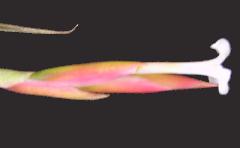
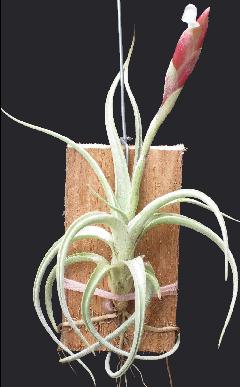
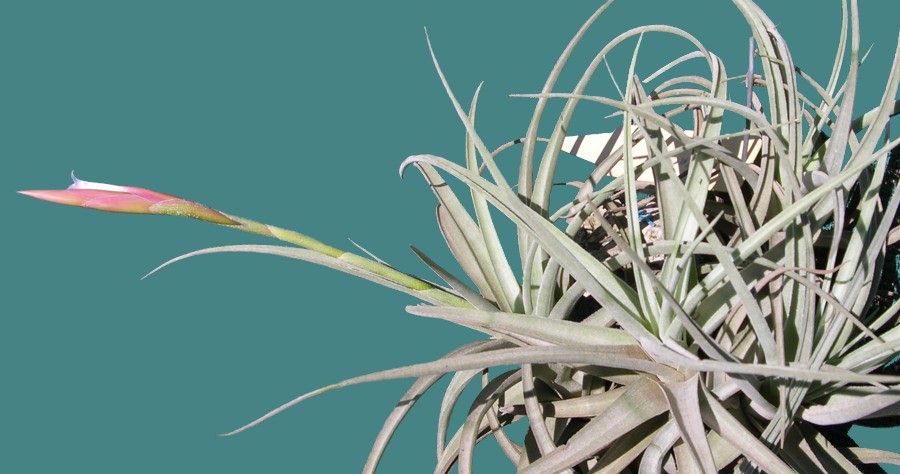
| Ken Woods 03/08. |
Bob Hudson, Cairns 01/10. |
Len Colgan 03/13. |
(Len Colgan.... "fairly common in Australia and Germany but quite rare in USA.")


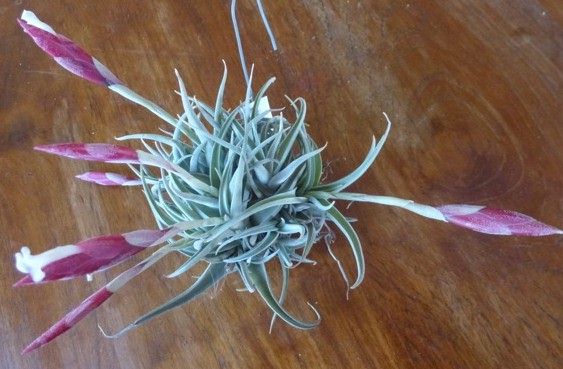

| Bruce Dunstan 2012. |
Bruce Dunstan 12/14 same plant 12 months later. |
Chris Larson 01/16 ex. Holm |
Chris Larson ... "A beautiful plant. Clumps easily & a lovely flower - and seems to love the treatment you are giving it.
Just a little aside, I got the other clone from Derek at the last TPE in the auction. We were having a discussion about this clone being a little more difficult to grow – and I seem to remember that the words may have been cold sensitive - than the one in Bruce’s photo.
I inadvertently left it out during the past winter – in fact since the TPE. It hasn’t missed a beat on the east face of my shed. The only protection from the rain it has is the gutter above it – so it gets a fair amount of cold Melbourne rain in the winter. A lovely species whichever clone."
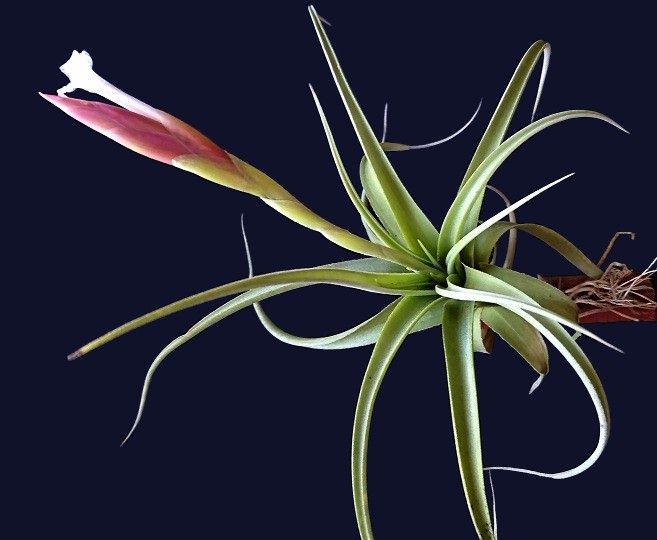

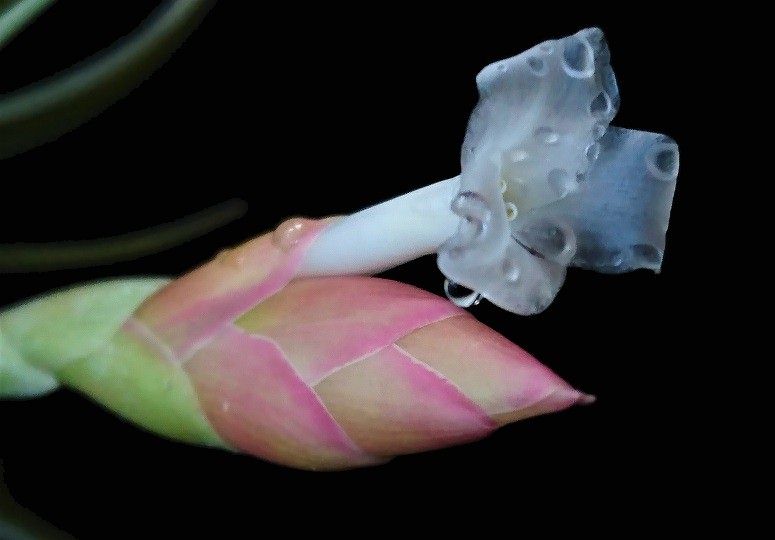
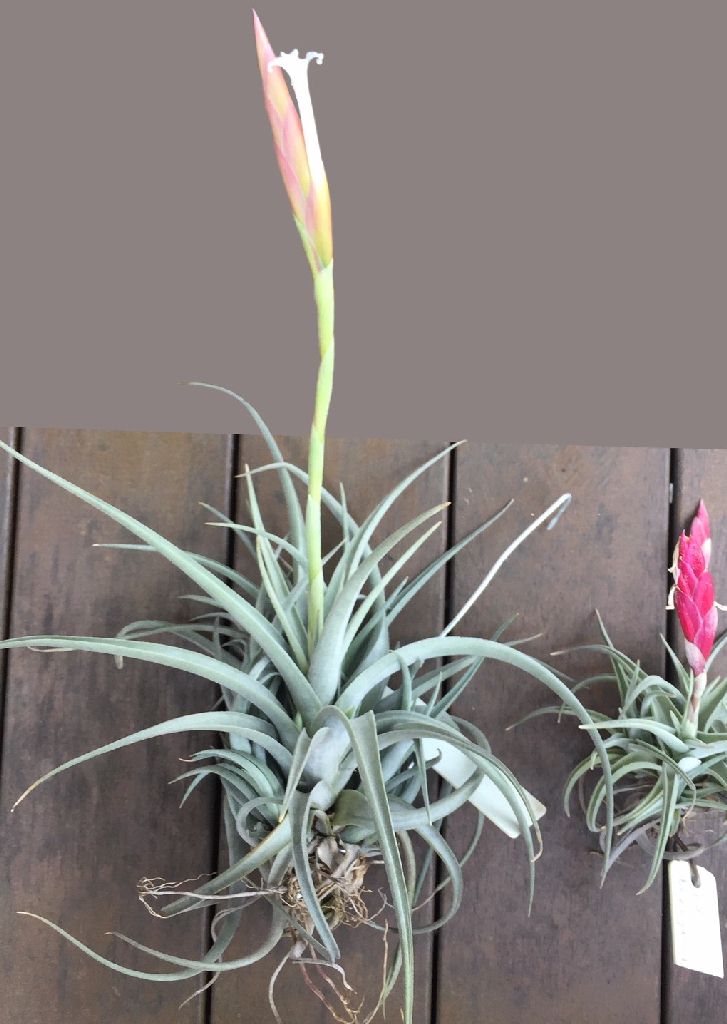
| Steve Molnar 01/18 |
Bruce Dunstan 12/18 |
Bruce Dunstan ... "First flowering of the larger clone for me. I love the bright spikes of the smaller one. It grows like a weed for me. I had roots from a plant above almost parasitizing one below with its huge root system getting into the leaf sheaths and wrapping around the smaller plant searching out more moisture."

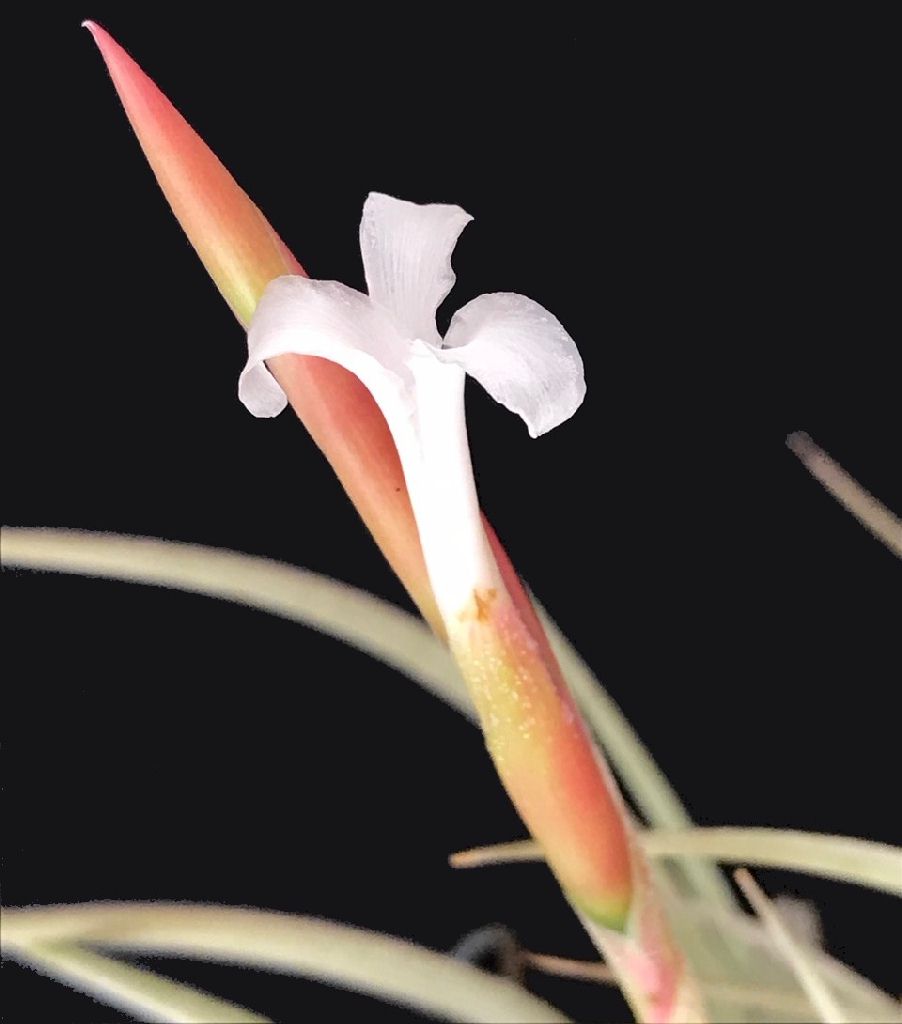
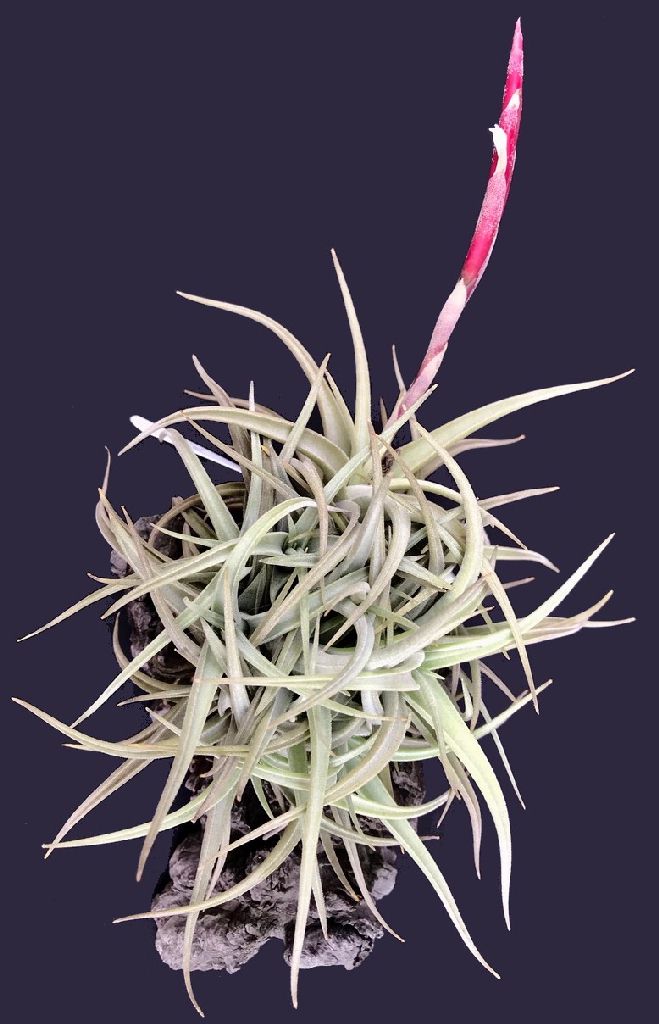

| Ray Clark 03/19 bigger, ex. Butcher |
Ray Clark 03/19 smaller, ex. Larson |
Ray Clark ... "Something else to make you think a little. The first of these two plants came from Derek Butcher several years ago and the smaller plant came from Chris Larson a few years before that.
Reading info on the DVD it seems that there is a reasonable degree of variation, whilst both fit the description. The plant from Derek is bigger with paler coloured flower spike and the plant from Chris is somewhat smaller and the flower spike is much more lacquer red in colour, (deeper and more intense)."
Chris Larson ... "They are both beautiful plants. The large one having very brittle leaves sort of like ixioides, and the small having soft leaves. I find the large one to be a touch cold tender here – where the small one is tough."
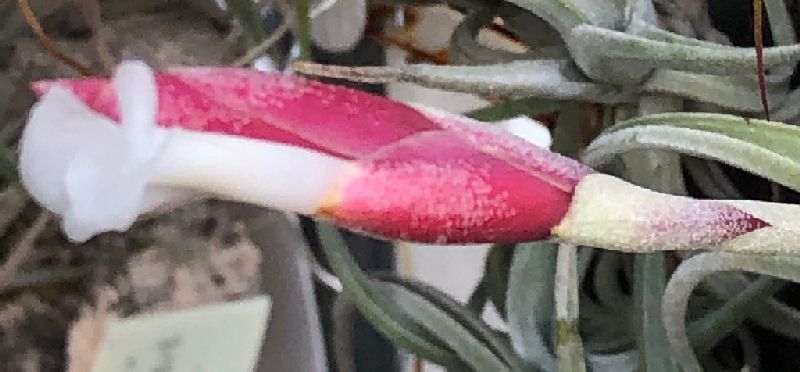

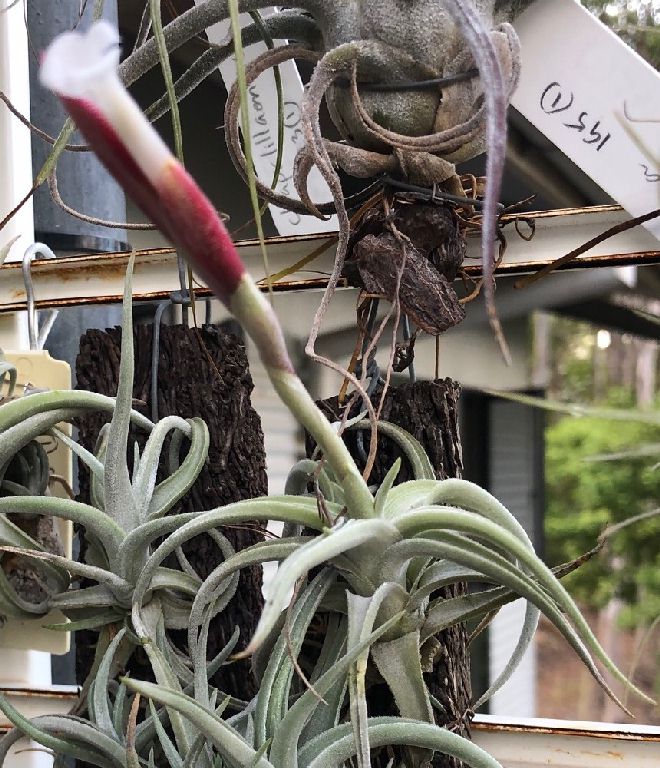 Dale Dixon ... "This little Bolivian species flowers for me every year. I have three in flower this year. It seems to be a fast grower and an amazingly prolific clumper. I love the white/red contrast of petals to bracts."
Dale Dixon ... "This little Bolivian species flowers for me every year. I have three in flower this year. It seems to be a fast grower and an amazingly prolific clumper. I love the white/red contrast of petals to bracts."

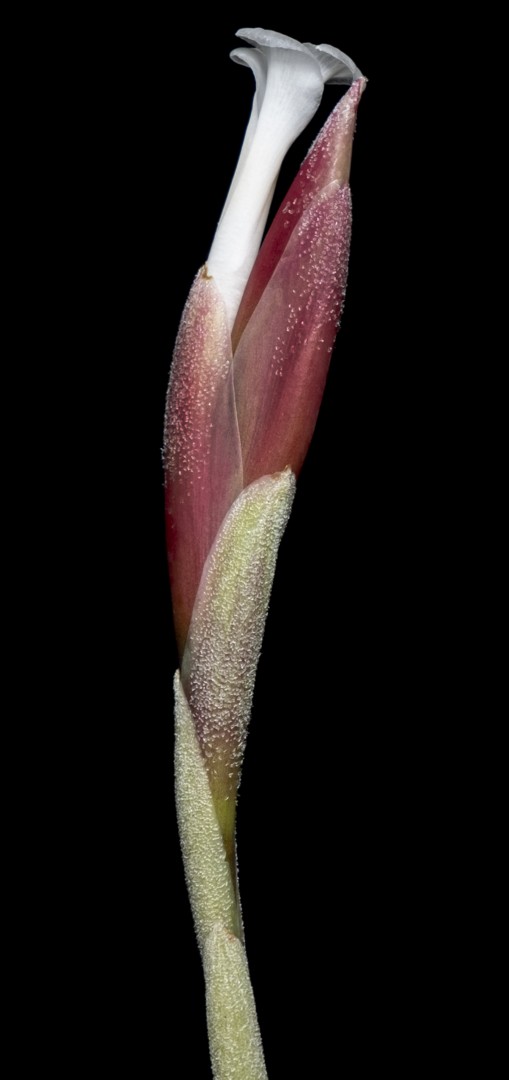
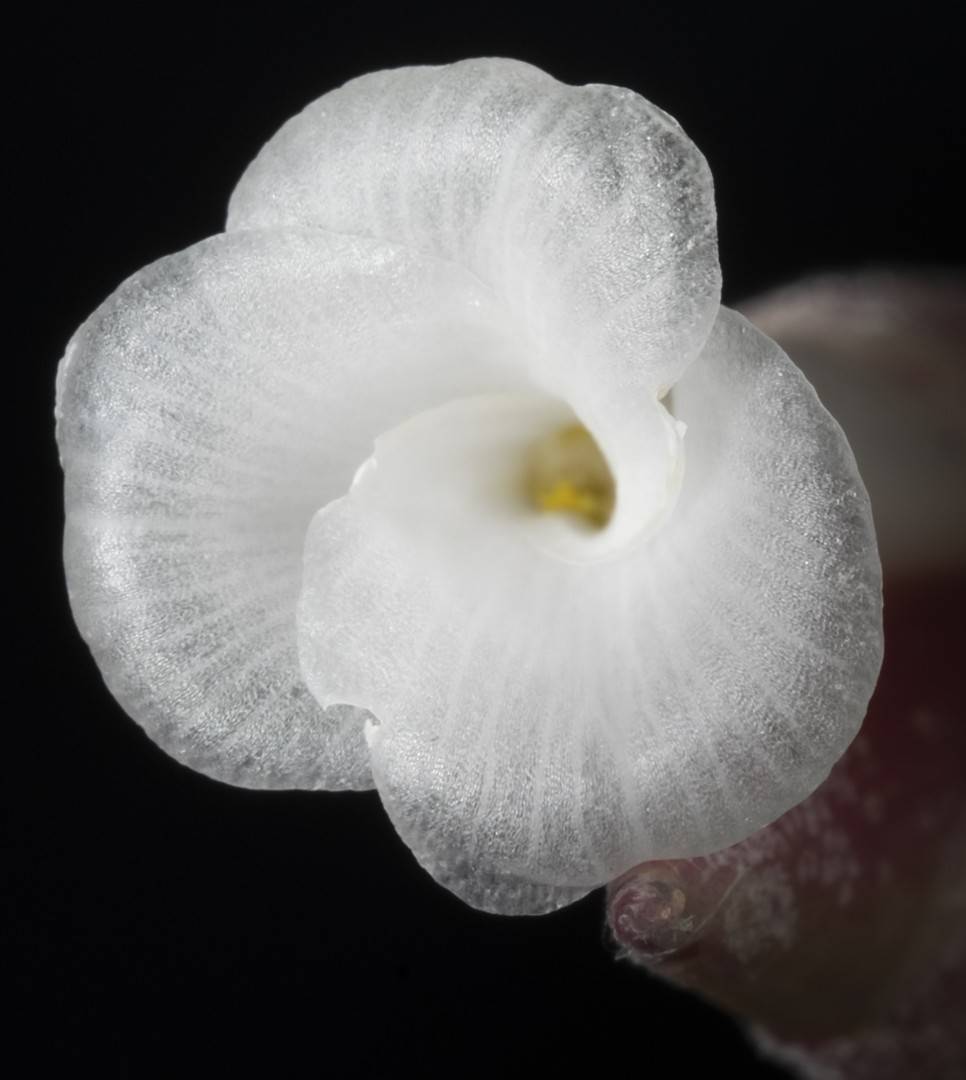
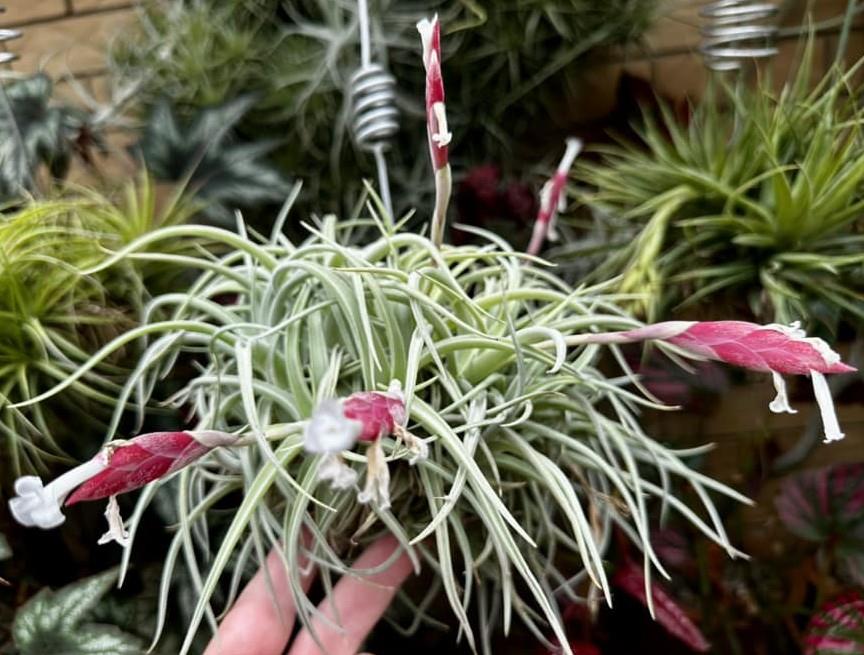
| Rob Bower 01/23 |
Robert Reitano 01/25 |
Tillandsia bermejoensis, L. Hromadnik, Trop Subtrop. Pflanz. 31:9-11. 1979
Plant short stemmed, flowering to 20cm high, leaves polystichous,strongly reflexed, to 17cm long.
Leaf Sheath indistinct, same colour as blade, sticking out silver grey scaled.
Leaf Blade narrow triangular, tapering to the tip, rolled inwards, to 18mm wide, scales on the leaf edge long winged.
Scape erect to slightly bent, 7cm long, shorter than th leaves, 3mm thick, scattered lepidote to glabrous.
Scape bracts densely imbricate, twice as long as the internodes, the lower ones leaf-like, the upper ones similar to the floral bracts, with membranous non-nerved edges, mildly convex, scaled, nerved.
Inflorescence simple, sword-shaped, complanate, erect to bent, to 8cm long, 17mm wide, ca. 6 – 8 flowered.
Rhachis not visible, flat edges.
Floral bracts densely imbricate, distichous, broad-oval, blunt, to 30mm long, 15mm wide, exceeds the sepals, not keeled, the upper ones having a flattened back towards the base, glabrous, nerved, with membranous edge, red.
Sepal 21mm long, 8mm wide, the posterior ones joined for short way and keeled.
Petal 40 – 50mm long, the bottom half 3mm wide, the upper half 5mm wide, white, making a closed tube, its tip rolled strongly backwards.
Stamens and Style enclosed,
Filament 30mm long, ribbon-like, equalling the style.
Habitat Eastern slope of Sierra de Santa Cruz by Rio Bermejo ca 900m, vertical cliffs between Samaipata and Angostura, Florida, Santa Cruz, Bolivia.
Holotype Hromadnik Coll. No. 3054, July 1977, HEID.
Differs from T. xiphioides in.
Sepals much shorter (to 21mm long)
Petals narrow (T. xiphioides 2cm wide, edges serrated, wavy blade)
Petals non-scented.
Subject: Re: T. bermejoensis
From: Derek Butcher, 30-8-98
Eric: For what it is worth I have a photo of HR5300 which shows lepidote floral bracts whereas the type HR3054 apparently does not. We know that the colour of bracts can vary considerably - see alberi, zecheri, or even xiphioides. Could this be the same? I believe that EG95-23 is a bermejoensis but perhaps there is other floral data we don't know about yet.
From: Eric Gouda, 31 Aug 1998
Dear Walter, Derek, Len and Renate,
OK, now I've tried to figure out some characters in the flowers and did compare them with T. bermejoensis. I've also made a drawing of these characters (can put them on the net if needed).
Diagnostic descriptions of EG95-23
Plant acaulescent. Scape-bracts not foliaceous. Spikes up to 5 flowered. Floral-bracts ovate, apiculate and rounded, 2.4-3cm long, 1.8cm wide or more, subdensely lepidote outside. Sepals 2-2.09cm long, 0.7cm wide, bluntly carinate. Petals 0.7cm wide or more. Stamens emerging from the throat of the corolla. Filaments plicate.
Compared against diagnostic descriptions of T. bermejoensis
Plant short caulescent. Scape-bracts the lower ones foliaceous. Spikes 6-8 flowered. Floral-bracts broadly ovate, obtuse, 3cm long, 1.2-1.5cm wide, glabrous outside. Sepals 2.1cm long, 0.8cm wide or more, distinctly carinate. Petals 0.5cm wide. Stamens included.
Tillandsia bermejoensis. Floral-bracts broadly ovate, obtuse, 1.5cm wide, glabrous outside. Stamens and pistil included
EG95-23. Floral-bracts ovate, rounded and obscurely apiculate, 1.8cm wide, in upper part subdensely lepidote (glabrous inside). Stamens emerging from the throat of the corolla.
Please give me your comments.
From: Eric Gouda, 1 Sep 1998
At 1-9-98 Butcher wrote: "Photo in Bromelien Studien shows the first floral bract lepidote. Was this of HR3054? Is the first bract ignored?"
Answer - I think so, I did notice this too.
"Do stamens advance with the age of the flower or do the petals open further? I know the stamens advance in Vriesea because I have been caught in trying to measure how far the
stamens protrude."
Answer - I don't think so, but often the style does in protoandian species.
"Does the omission of state of filaments in T. bermejoensis mean they are straight or unknown?"
Answer - If EG95-23 were described as a new species and made synonymous with T. bermejoensis at least we would be aware of its variation!
At the moment I do not think that it will be described as new.
Updated 06/01/25


















